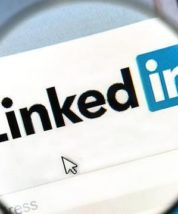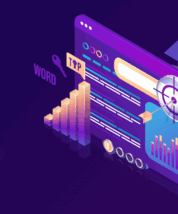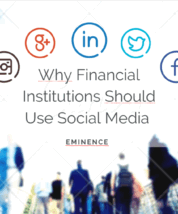Introduction
This includes the use of advanced techniques such as Account Based Marketing (ABM), which enables specific accounts to be targeted with personalized messages, as well as the ongoing optimization of advertising campaigns.
With this in mind measuring and analyzing the performance of LinkedIn Ads campaigns is extremely important. By defining relevant key performance indicators (KPIs) and using LinkedIn’s integrated analysis tools, it’s easy to assess the effectiveness of marketing efforts and adjust strategies accordingly.
Understanding decision-makers on LinkedIn:
1-Identifying the ideal decision-maker: How to create an accurate, detailed buyer persona
To develop an effective LinkedIn B2B strategy, it's essential to identify the ideal decision-maker within the target market. This starts with the creation of buyer personas, which are semi-fictional representations of ideal customers.
An accurate and detailed buyer persona includes demographic information, behaviors, challenges and professional goals.
Once the specific needs of these decision-makers have been identified, it will be easy to tailor messages and offers. In the case of marketers, for example, the best way to target them is to take into account their concerns about B2B lead generation on LinkedIn and how a LinkedIn Ads campaign could help them achieve their objectives.
2-The different types of decision-maker: Present the different roles and levels of decision-making within a company
Decision-makers within a company are not all the same.
There are several roles and decision-making levels that influence the purchasing process, including managers, team leaders and specialists, who can also play a key role in decision-making. Each of these decision-makers has different priorities and consumes varied content on LinkedIn.
A managing director may be more interested in case studies and strategic analysis, while a marketing manager might seek out articles on best practice in B2B targeting.
Understanding these differences allows you to effectively segment leads and tailor a LinkedIn B2B strategy accordingly.
3- Decision-maker behavior on LinkedIn: Analyze how decision-makers use LinkedIn and what types of content they consume
The behaviors of decision-makers on LinkedIn are very important for optimizing B2B lead generation.
In general, these professionals use the platform to keep abreast of industry trends, make professional connections and seek solutions to their problems.
They mainly consume informative content, such as blog posts, infographics and explainer videos, and to capture their attention, it's highly recommended to create relevant content that meets their specific needs.
What's more, using LinkedIn Ads can be an effective way of reaching these decision-makers with targeted messages.
By designing a well-structured LinkedIn Ads campaign that highlights solutions to the problems faced by these decision-makers, it's easier to increase engagement and conversion in the B2B lead generation strategy on LinkedIn.
Mastering LikedIn Ads targeting tools
1-The different types of targeting:
As part of a LinkedIn B2B strategy, it's imperative to master the various B2B targeting tools offered by LinkedIn Ads. Indeed, LinkedIn offers several targeting options that enable you to effectively reach your target audience:
a-Demographic targeting:
Demographic targeting includes criteria such as age, gender and geographic location. To promote project management software to project managers in a specific region, for example, it's advisable to refine the audience according to these criteria.
b-Socioprofessional targeting:
This type of targeting focuses on data such as industry sector, company size and hierarchical level. Using this type of targeting, we can reach decision-makers in medium-sized companies in the technology sector.
c-Behavioral targeting:
Behavioral targeting targets users based on their activity on LinkedIn, such as the content they share or the groups they belong to. This makes it possible to reach engaged professionals who show an interest in topics relevant to the offer.
d-Targeting by accounts:
This option lets you target specific businesses based on their name or other criteria. This is particularly useful for campaigns where you want to reach strategic or competing companies.
2-Account-based targeting:
Account-based targeting is a powerful tool for LinkedIn Ads campaigns, enabling marketers to reach specific companies directly.
Using this feature, it's possible to create a list of companies to target, which is ideal for B2B lead generation.
As an example, let's take the case of a LinkedIn Ads agency that works with SaaS solutions, which enable it to target companies in the technology sector that have raised funds.
3- Similar audience targeting:
Similar audience targeting is an effective strategy for extending reach while maintaining relevance.
By analyzing the best customers identified through buyer personas, it's easy to create a similar audience that shares characteristics with these customers.
Having, for example, a solid database containing information on qualified leads, LinkedIn can use this data to identify other users with a similar profile.
This not only optimizes LinkedIn Ads campaigns but also improves the overall quality of LinkedIn B2B leads and reaches prospects who are more likely to be interested in the offer.
4- LinkedIn Sales Navigator Leads:
The LinkedIn Sales Navigator is a must-have tool for B2B marketing professionals to optimize the sales process and lead generation strategy.
This advanced feature provides access to an extensive, filtered database to identify qualified leads according to various criteria such as industry, company size and hierarchical level.
Integrating Sales Navigator into the LinkedIn B2B strategy makes it possible to find relevant prospects and track their activities and engagements on the platform.
If, for example, the objective is to reach marketing managers in the automotive sector, Sales Navigator can refine the search and interact with these potential leads through a personalized approach, thus increasing the effectiveness of LinkedIn Ads campaigns.
Creating impactful ads for decision-makers
1- The most effective ad formats:
As part of a LinkedIn B2B strategy, the choice of ad format is important to maximize the impact of campaigns. LinkedIn offers several formats, each with its own advantages and disadvantages:
a-Text Ads:
These simple text ads are easy to create and can be deployed quickly.
They are ideal for direct, concise messages, however, their visual impact is limited compared to other formats.
A well-written text ad can generate clicks at an affordable cost, but it may not capture attention as effectively as an image or video.
b-Image Ads:
Single-image ads are very effective at attracting attention with an eye-catching visual.
They blend well into the news feed and can pique the interest of decision-makers, however, they lack dynamism compared to videos.
c-Video Ads:
This format is often considered the most engaging because videos can tell a story and convey emotions, which is essential for captivating a B2B audience.
For example, a video demonstrating a product in action can be more persuasive than a simple image, but let's face it, creating video content can require more resources.
d-Carousel Ads:
These ads present several images or videos in a single scrolling format.
They are particularly useful for telling a story or highlighting several products or services, but can be less effective if the user doesn't scroll.
Using these different formats in LinkedIn Ads campaigns and tailoring the message to the target audience helps optimize B2B lead generation.
2- Write catchy copy:
Catchy copywriting is essential for capturing the attention of decision-makers on LinkedIn. Here are our key tips:
a- Know your audience:
Use the information gathered when creating buyer personas to tailor the message to the specific needs and concerns of decision-makers.
b-Use clear, direct language:
Avoid excessive jargon and get straight to the point, as a clear message is easier to remember.
Instead of saying, for example, “optimize interdepartmental synergy”, opt for “improve collaboration between teams”.
c-Include a call to action (CTA):
Encourage decision-makers to take action by adding a compelling CTA, such as “Discover how we can transform your marketing strategy”, this encourages them to click on the ad and explore the proposed solutions further.
d-Telling a story:
Messages that tell a story or present a case study resonate more with decision-makers.
Start with a challenge faced by a company similar to the target and show how the product provided a solution.
In short, incorporating these elements into ad copy helps increase engagement in LinkedIn Ads campaigns, which will help generate more LinkedIn B2B leads.
3- Use high-quality visuals:
Visuals play an important role in the success of LinkedIn Ads.
A good visual can not only attract attention, but also reinforce the message. Here's why it's essential to use quality visuals:
a-Immediate impact :
Users scroll quickly through their news feed, so a captivating visual can stop this movement and encourage them to stop and look at the ad. A dynamic image showing the product in action can arouse curiosity.
b-Reinforce recall:
Information accompanied by images is better retained by users. It's advisable to integrate relevant visual elements into ads to increase the likelihood of the message being remembered by decision-makers.
c-Professionalism:
Well-designed visuals reflect the brand's professionalism. Use high-resolution images and make sure they match your corporate identity.
d-Align with message:
The visual should complement the ad text.
If you're talking about technological innovation, it's a good idea to show a modern image that illustrates the technology, rather than a generic photo.
All these practices integrated into ads maximize the visual impact of LinkedIn Ads campaigns and attract more attention from decision-makers.
4- Personalize ads:
Personalization is essential for optimizing LinkedIn Ads campaigns and effectively reaching audience segments. How do you go about it?
a-Lead segmentation:
Use demographic and behavioral data to segment audiences into specific groups based on their interests and needs.
For example, segment audiences by industry or hierarchical level to tailor ad content.
b-Tailored messages:
Create different messages for each identified segment.
Between targeting corporate executives and line managers, the tone and content must vary to address their respective concerns.
c-Dynamic use of content:
Thanks to LinkedIn Ads' advanced features, it's possible to automatically personalize ad elements according to the prospect's profile (such as name or company).
This creates a more personal connection with the user.
d-A/B testing:
Set up A/B tests to evaluate which personalized versions of ads generate the best engagement with each segment.
This enables campaigns to be continually optimized based on observed performance.
Applying these personalization strategies in LinkedIn Ads campaigns increases the relevance and effectiveness of advertising messages, resulting in better conversion and more qualified LinkedIn B2B leads.
Using Account Based Marketing (ABM)
1 - What is ABM?
Account Based Marketing (ABM) is a targeted marketing strategy that focuses on specific, high-value accounts, rather than a wide range of prospects.
This approach is particularly effective in the B2B context, where sales cycles are often long and complex.
ABM enables companies to tailor their campaigns to the unique needs of each account, increasing the chances of conversion and retention.
The benefits of ABM are numerous:
a-Enhanced personalization:
Tailoring messages and content to the specifics of each account creates more engaging experiences for each prospect.
For example, a company offering software solutions can develop tailor-made case studies for each potential customer, demonstrating how its products address specific challenges.
b-Alignment between marketing and sales:
ABM fosters close collaboration between marketing and sales teams and ensures that these stakeholders are working towards common goals.
This optimizes the sales process, as teams are better prepared to approach prospects with relevant information.
c-Better return on investment (ROI):
By focusing on a limited number of high-potential accounts, companies maximize their return on investment. According to a study conducted by ITSMA, 60% of companies that have adopted ABM report a revenue increase of at least 10% in the first year of their ABM strategy*
Source : https://www.inboundvalue.com/blog/account-based-marketing
2- Implementing an ABM strategy on LinkedIn:
Implementing an ABM strategy on LinkedIn requires careful personalization of messages for each decision-maker within the same company.
This starts with in-depth lead segmentation to identify the different key players involved in the decision-making process.
These steps will guide you in the development of your ABM strategy
a-Identifying decision-makers:
Use LinkedIn to research and identify decision-makers within target accounts. This may include CFOs, marketing managers or project managers. Each role has its own priorities and concerns.
b-Creating tailored messages:
Once the targets have been identified, it's essential to tailor the messages to their specific needs.
If the target is a marketing director, for example, it's not advisable to focus on how the solution can improve the performance of advertising campaigns, whereas a technical director might be more interested in security and technical integration.
c-Use of LinkedIn Ads:
Take advantage of LinkedIn Ads' advanced features to deliver personalized messages directly to identified decision-makers.
For example, create a LinkedIn Ads campaign that specifically targets marketing managers at technology companies and highlight a relevant white paper.
d-Monitoring and adjustment:
After the campaign has been launched, monitoring performance and adjusting messages according to feedback is essential, and can include modifying content or even adding other audience segments if necessary.
Measuring and optimizing campaigns :
1-Key performance indicators (KPIs):
As part of a LinkedIn B2B strategy, it's essential to define key performance indicators (KPIs) to measure the effectiveness of LinkedIn Ads campaigns.
These metrics make it possible not only to assess the overall performance of ads, but also to identify areas requiring improvement.
Here are the KPIs to track:
a-Click-through rate (CTR):
CTR is a fundamental metric that indicates the percentage of users who have clicked on an ad relative to the total number of impressions.
A high CTR suggests that the ad is relevant and engaging.
If, for example, an ad received 200 clicks for 10,000 impressions, the CTR would be 2%, which is considered a good result on LinkedIn.
b-Cost per click (CPC):
This metric indicates how much each click on the ad costs.
A high CPC may signal that the content isn't compelling enough, or that the targeting isn't optimal.
c-Conversion rate:
This is the percentage of users who performed the desired action after clicking on the ad: filling in a form or requesting a demo.
A high conversion rate indicates that the campaign is generating qualified LinkedIn B2B leads.
d-Cost per conversion:
This metric calculates the total amount spent to acquire a customer, divided by the total number of conversions achieved, which helps to assess the profitability of campaigns.
2-LinkedIn analysis tools:
LinkedIn offers several analysis tools integrated into its LinkedIn Ads platform, enabling marketers to evaluate campaign performance in depth.
Here are some key features:
a-Campaign Manager:
This tool centralizes all advertising data and provides detailed reports on ad performance including impressions, clicks, CTR and much more.
Data can be segmented by demographic, industry or hierarchy level to better understand which audiences respond best to the ad.
b-Insights Tag:
This tool tracks users' actions on the website after interacting with LinkedIn ads.
By installing this tag, it's easy to measure conversions and obtain valuable data on visitor behavior, which is essential for optimizing B2B lead generation efforts.
c-Brand Lift Studies:
This feature enables you to measure the impact of campaigns on brand awareness and image.
By comparing pre- and post-campaign perceptions, it's easy to assess the effectiveness of messages and adjust strategy accordingly.
3-Optimize campaigns:
Ongoing optimization is essential to maximize the effectiveness of LinkedIn Ads campaigns. Here are some practical tips:
a-adjust targeting:
Use the data collected via KPIs to refine B2B targeting.
If, for example, a certain sector generates more engagement, it's advisable to focus advertising efforts on these specific segments, tailoring messages to the specific needs of decision-makers in that sector.
b-Modify budgets:
Analyze the performance of individual ads and allocate more budget to campaigns that are performing well, while reducing that of less successful campaigns.
This ensures that resources are used where they have the greatest impact.
c-Test different creative:
Don't underestimate the importance of visuals and text in ads.
Test different versions (A/B testing) to determine which creatives generate the best engagement e.g. try different images or videos as well as various calls to action (CTAs) to see what resonates best with the audience.
d-Analyze regularly:
Establish a regular schedule to review KPIs and adjust strategies accordingly. This will optimize current campaigns and inform future planning.
Conclusion
In short, mastering LinkedIn as a B2B marketing platform requires a strategic and analytical approach.
By integrating methods such as Account Based Marketing (ABM), establishing relevant Key Performance Indicators (KPIs) and leveraging available analytics tools, it's now easy to improve B2B lead generation and maximize ROI.
Continuous optimization of LinkedIn Ads campaigns enables efforts to be adjusted according to the data collected, ensuring that every euro invested generates concrete results.









